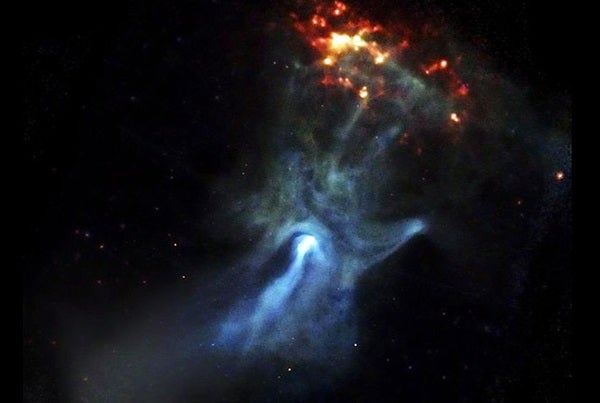“Scientists are intrigued by what exactly powers these massive explosions, and understanding this would yield important insights about the fundamental forces in nature, especially on the astronomical–cosmological scale,” said Peter Moller of Los Alamos National Laboratory’s Theoretical Division.
A neutron star is created during the death of a giant star more massive than the Sun, compressed to a tiny size but with gravitational fields exceeded only by those of black holes. And in the intense neutron-rich environment, nuclear reactions cause strong explosions that manifest themselves as X-ray bursts and the X-ray superbursts that are more rare and 1,000 times more powerful.
The importance of discovering an unknown energy source of titanic magnitude in the outermost layers of accreting neutron star surfaces is heightened by the unresolved issue of neutrino masses, the recent discovery of the Higgs boson, and the fact that highly neutron-rich nuclei with low-lying states enable “weak interactions,” prominent in stellar explosions. The weak nuclear force is one of four fundamental sources, such as gravity, that interact with the neutrinos; it is responsible for some types of radioactive decay.
These hitherto celestially operative nuclei are expected to be within the experimental reach of the Facility for Rare Isotope Beams (FRIB), a proposed user facility at Michigan State University (MSU) funded by the U.S. Department of Energy Office of Science.
Previously, a common assumption was that that the energy released in these radioactive decays would power the X-ray superburst explosions. This was based on simple models of nuclear beta decay, sometimes postulating the same decay properties for all nuclei. It turns out, however, that it is of crucial importance to develop computer models that realistically describe the shape of each individual nuclide since they are not all spherical.
At Los Alamos, scientists have carried out detailed calculations of the specific individual beta-decay properties of thousands of nuclides, all with different decay properties, and created databases with these calculated properties.
The databases are then used at MSU as input into models that trace the decay pathways with the passage of time in accreting neutron stars and compute the total energy that is released in these reactions.
The new unexpected result is that so much energy escapes by neutrino emission that the remaining energy released in the beta decays is not sufficient to ignite the X-ray superbursts that are observed. Thus the superbursts’ origin has now become a puzzle.
Solving the puzzle will require that scientists calculate in detail the consequences of shapes of neutron-rich nuclei, the authors said, and it requires that they simultaneously analyze the role played by neutrinos in neutron star X-ray bursts whose energetic magnitudes are exceeded only by explosions in the nova–supernova class.
The strong nuclear deformations that formed the basis for the neutrino cooling in neutron star crusts also play a role in a number of astrophysical settings and have been taken into account in studies of supernova explosions and subsequent collapses.










